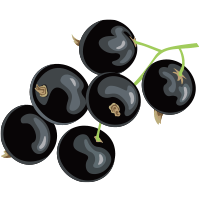The essence of an Australian fruit bomb with character of powerful, juicy and bold blackberry, cherry and blackcurrant, underpinned by a spicy, bold and creamy style.
93 POINTS
Wine Enthusiast
Reviewed by Christina Pickard
Torbreck’s most delicious offerings come, in this reviewer’s opinion, not from its Shiraz-dominant wines but from its Grenache, which, and in this case, makes up 61% of the blend. It leads with tangy rhubarb, red berry, orange zest and strawberry leaf, with earthy undertones like cumin, coffee and meat, which all flow seamlessly onto a palate of silky, pristine fruit, crunchy acidity and savory spice. This is polished and approachable but also complex and focused.
90 POINTS
Wine Spectator
Shows plenty of gusto to the wild berry, sarsaparilla and spice flavors, with clove and bay leaf accents lingering. A juicy frame of tannins firms up on the finish. Grenache, Mataro and Shiraz. Drink now through 2033.
Cuvée Juveniles was created as a kind of Australian “Cote Du Rhone” on the classic Barossa grape types Grenache, Mourvedre (called Mataro) and Shiraz from mainly old vineyards. The grapes are almost the cornerstone of the Barossa Valley and loved across much of the world as the blended “GSM”. As the wine is not aged in barrels, it has retained more of its freshness and is best drunk when it is still young. First vintage produced in 1999 at the behest of Tim Johnston, who owns a bar in Paris of the same name. In 2019, the summer was extremely hot with very little rain. It produced grapes that ripened early and a small harvest. In turn, they became so much more dark and intense.
About Torbreck
Torbreck produces what Robert Parker describes as “some of the most exciting wines on earth”. The house was founded in 1994 by David Powell, who bought a vineyard in Maranaga. This became the foundation not only for the wine house Torbreck, but also for the man behind it, a “larger than life” personality who helped create a number of epoch-making wines, which, among other things, at one point earned him the title of Winemaker of the Year in The Wine Advocate. Physically, Torbreck can only be described as a very minimalist wine house – it consists, in short, of something that could look like a sheep shed, two cement tanks and a primitive pump. The name Torbreck, like many of the house’s wine names, is of Scottish origin and should be seen as a tribute to the country where David Powell previously worked. Thus, e.g. Woodcutter’s is named after the Scottish woodcutters, while the house’s flagship, Run Rig, is named after the popular Scottish band. Torbreck’s wine style is a beautiful union of the classic Barossa wine and the best from France’s Rhône Valley. Nuanced, soft wines with an almost creamy structure that already seduce at first taste. Parker actually also calls the house’s Run Rig “La Mouline of Australia”, by which he alludes to the single vineyard cuvée from Guigal’s Hermitage, which has both sky-high prices and points. However, due to a hard divorce, David had financial problems, so in 2002 he had to sell the winery to Jack Cowin, who in 2008 chose to sell it on to the American investor, Pete Kight. In 2013, however, David chose to leave the winery, after which his assistant winemaker Craig Isabel took over the management. However, the resales and David’s farewell to Torbreck have in no way harmed either the winery’s wines or reputation. Torbreck still belongs to the absolute elite, and the house’s prestige wine, the Laird, is sold at prices matched only by Three Rivers, Penfolds Grange and Henschke’s Hill of Grace. However, this does not mean that wines are not made at a more affordable price range – here, for example, GMS, Juveniles and Woodcutter’s excellent representatives of the house’s style.



